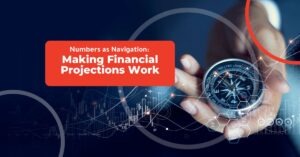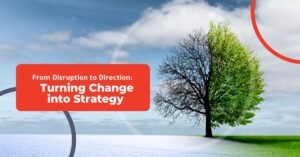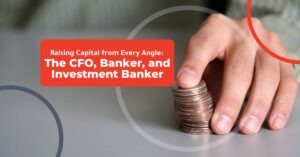Business Velocity: Creating Momentum and Agility
Mar 22, 2023
Business velocity is a term used to describe the pace at which businesses are able to create, execute, and iterate on strategies. It’s a conceptual measure of the momentum and agility of a business, and is a critical factor in long-term success. In this article, we’ll introduce an overview of business velocity and its benefits so you can start shaping your business to run with improved focus.
What is Business Velocity?
Business velocity is really the outcome of practices put in place that help a company move faster. That idea, “move faster,” doesn’t mean “move recklessly” or “speed up with no direction.” It simply means operating in ways where processes are designed to drive to decisions, with decisions quickly leading to actionable steps. Business velocity reflects the agility and momentum of a business, and is closely tied to the concept of strategic cadence, which is the rhythm at which an organization works. It refers to the planning cycles an organization undergoes, from short-term tactical planning to long-term strategic planning.
Benefits of Utilizing Business Velocity
Business velocity has numerous benefits for businesses, including improved efficiency, better decision-making, and increased agility.
Let’s unpack “agility” in business. How quickly can your business adapt to changing market dynamics, customer needs or emerging opportunities? For many companies, the answer is not too quickly. The reason for that is likely what’s keeping you from developing velocity: too many meetings, too many decisions bogged down with decision-makers, too slow of processes. A company designed to be agile is, culturally and operationally, streamlined for efficiency. Higher business velocity allows businesses to quickly react to changes in the market and customer needs, as well as to capitalize on new opportunities. Companies that operate with higher business velocity can make quick and informed decisions, allowing them to stay ahead of the competition.
Strategic Cadence
As we mentioned, velocity and agility are outcomes of processes. One process is cadence. Strategic cadence is the rhythm at which an organization works. It refers to the planning cycles an organization undergoes, from short-term tactical planning to long-term strategic planning. Breaking down a strategic cadence might involve:
- 3-5 Year Plan: What’s the vision of the company?
- Annual strategic planning. What are our priorities and objectives for the year to achieve our vision?
- Quarterly business reviews: How are we doing against our annual goals?
- Monthly or bi-monthly review: How are we doing to shape our quarterly results?
- Weekly meetings to update, respond and develop actions to achieve upward momentum, or velocity.
Strategic cadence allows businesses to stay focused and set realistic goals. Additionally, it creates a sense of urgency and keeps teams accountable for meeting deadlines.
Systems for planning are also key. These could include process management systems, customer relationship management systems, or project management systems. Systems, more than hard work, help businesses more easily stay on top of their goals and adjust their strategies accordingly.
The EOS Model
The EOS model is a framework for businesses to use when developing and executing strategies. EOS is the “Entrepreneurial Operating System” and it consists of four components: people, data, process, and technology. The first step is to prioritize which of these components needs to be addressed first or most. This can be done by examining customer data, identifying areas of opportunity, and understanding the resources and capabilities of the business.
The next step is to create a plan to address the identified areas. This could involve implementing new processes, developing new technology, or leveraging data to inform decision making. Finally, businesses should track and measure progress to ensure that strategies are delivering the desired results.
Rethinking Strategies
Maximizing business velocity requires leveraging customer insights, especially for innovation. Conduct customer surveys or capture feedback to discover areas to improve. Engage with customers to better understand their needs and expectations. It’s also crucial to track performance – the old “measure what matters” is a maxim for a reason.. This could involve tracking customer retention rates, sales figures, or customer satisfaction scores. When data helps drive decisions, you can focus on goals and objectives that are well-informed. One of the first things you do if you want to get someplace more quickly is figure out where it is on the map.
Ignoring Business Velocity
Or hey, keep doing what you’ve been doing. It’s worked so far right? You’ve maybe been in business for years – you’ve figured out what works for you.
A tough reality is all your success is behind you. Competition is evolving rapidly. Customer expectations and market drivers are more dynamic – sometimes volatile- than ever. Employees have higher expectations to stay innovative and interesting. And, it’s easier than ever to get distracted by new ideas, new competitors, even crises. In short, what once worked probably won’t next work. This can be especially hard for family or generational businesses to adjust to, and it’s one reason why getting an expert’s lens on your situation can be helpful.
Conclusion
In conclusion, business velocity is a critical factor in the long-term success of an organization. It enables businesses to quickly react to changes in the market and capitalize on opportunities. Focus on developing strategic cadence, and look to the EOS model for inspiration. Leverage customer insights and data to maximize business velocity. By doing so, you can increase efficiency, make better decisions, and stay ahead of the competition.


